Invasion of the ‘health hazard’ plants on estate
Residents raise concerns as white flowery plants spring up
Friday, 30th May — By Isabel Loubser
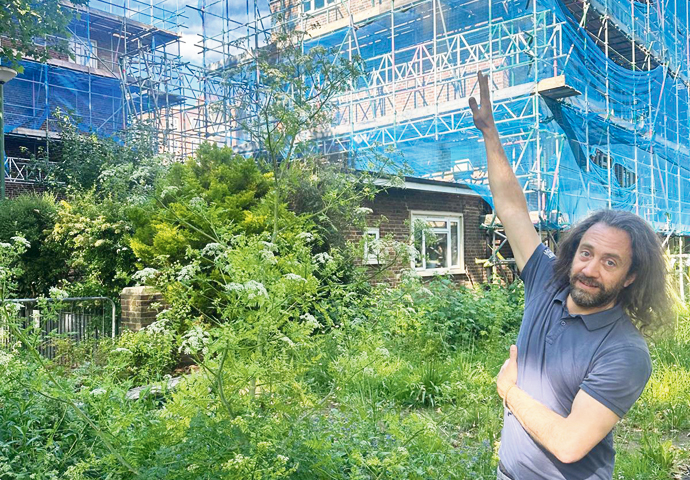
Joel Deason, secretary of the Park View residents’ association, said the plants had ‘sprung up in the last couple of weeks’
A LONG-SUFFERING estate which has been rubble-filled and fenced off for years thanks to a delayed new-build project has now got another problem to add to the list – dozens of hemlock plants.
Residents on the Park View estate in Highbury raised concerns after white flowery plants with purple-spotted stems were seen in the green space surrounding their flats and the children’s playground.
Joel Deason, secretary of the residents’ association, said: “It’s sprung up in the last couple of weeks, and where we’ve had some rain, it’s just gone mental. My friend said that it was hemlock and tried to alert people in our WhatsApp group so they know not to go near it.”
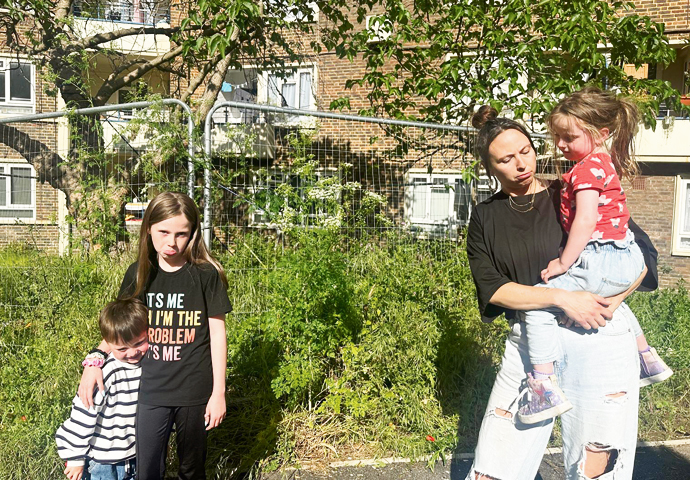
Park View resident Laura Sparks with her children
The Tribune contacted Phil Cox, who works for specialists in invasive plants PBA, to ask him to confirm the identity of the towering weeds. He said that the photos “quite clearly show hemlock” and said it was unusual to spot it in urban areas.
Mr Cox added: “It’s not an ideal plant to be hanging around in a communal area where there are children. There is a health hazard, but people would have to eat the stuff to get poisoned. We’ve lived with it forever, but it’s normally in the countryside.
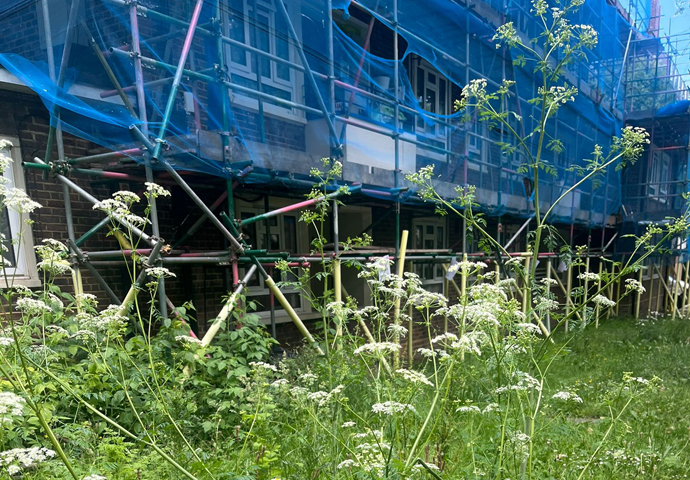
“If you brush past a plant, you’ll come to no harm. If you had a large open wound you might get some ill effect, possibly not death, but eating it can wipe you out.”
Laura Sparks, who lives on Park View with her three young children, said she was “extremely worried” about their safety.
She told the Tribune: “The kids have a habit of getting the flowers and making pretend food. They keep bringing flowers home, and when I noticed what they are, it’s just a nightmare trying to keep them away.”
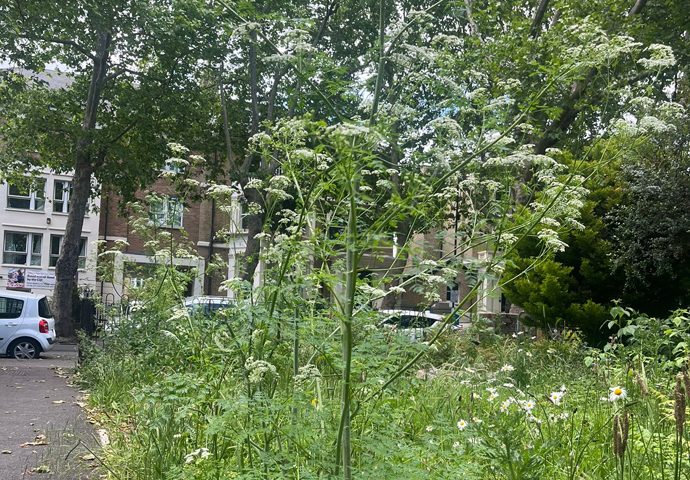
The Park View neighbours are now calling on the council to remove the plants as quickly as possible, believing that they may have come about through the contamination of soil brought in for the new-build project.
Mr Cox said the theory of soil contamination was “entirely possible” but said that it was often impossible to predict that soil is contaminated before using it.
He added: “Ideally, removal would be the best thing, you need to get it treated, dug out, and deal carefully with the waste.”
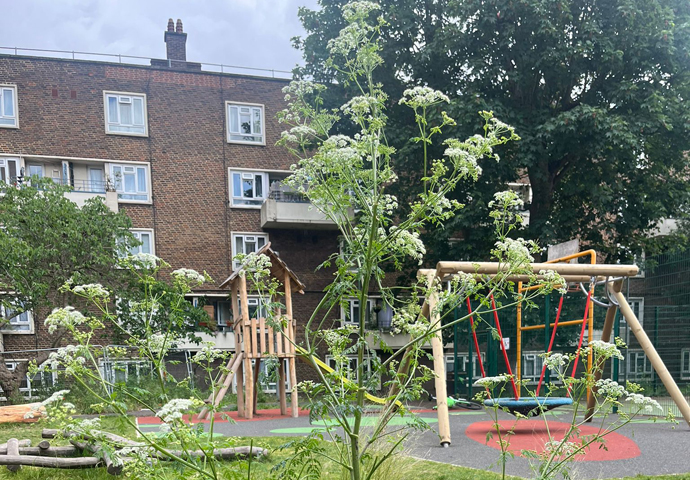
An Islington Council spokesperson said: “During a walk-through of the estate last week, hemlock and common hogweed were identified, both of which are potentially hazardous.
“A mitigation plan was swiftly put together and we are writing to all residents informing them of our actions and to warn them of the potential risks of coming into contact with the weeds. Our specialist teams will shortly begin an extensive treatment and removal programme, which is expected to take a few weeks.
“There is no evidence at this stage that the hemlock or hogweed have been brought to the site in the topsoil.”